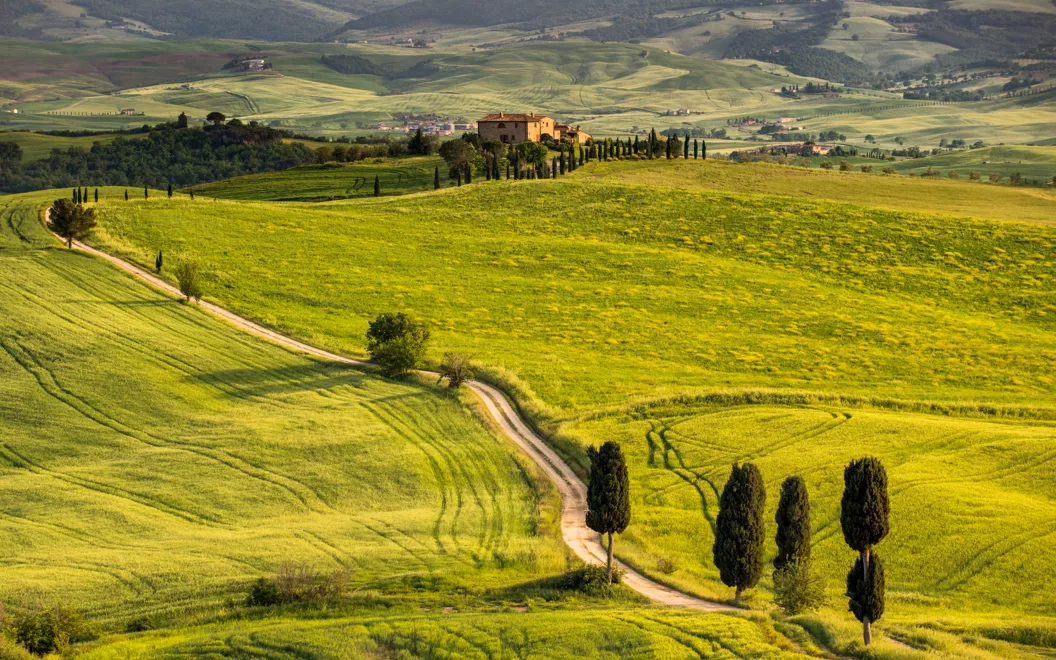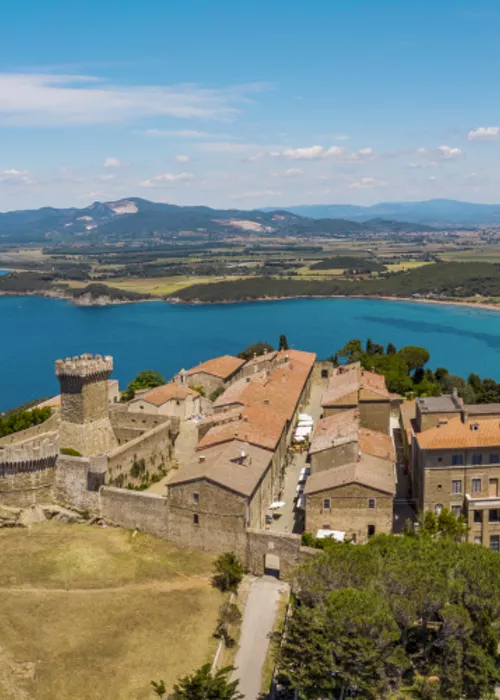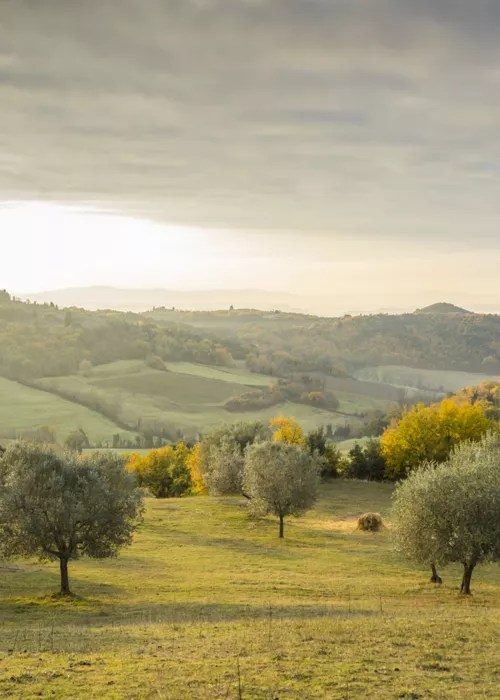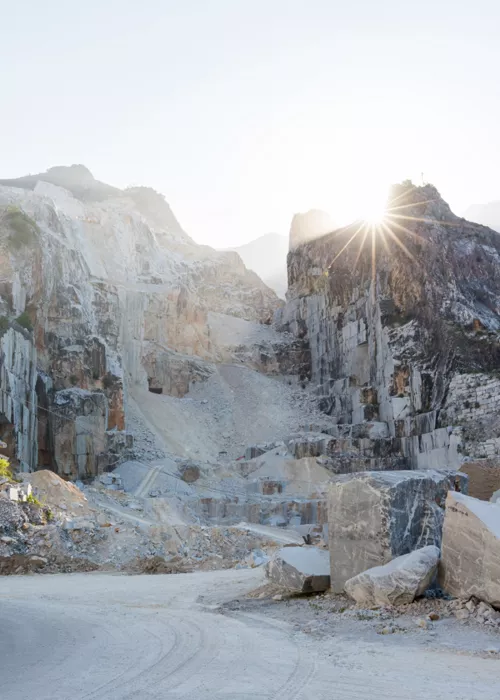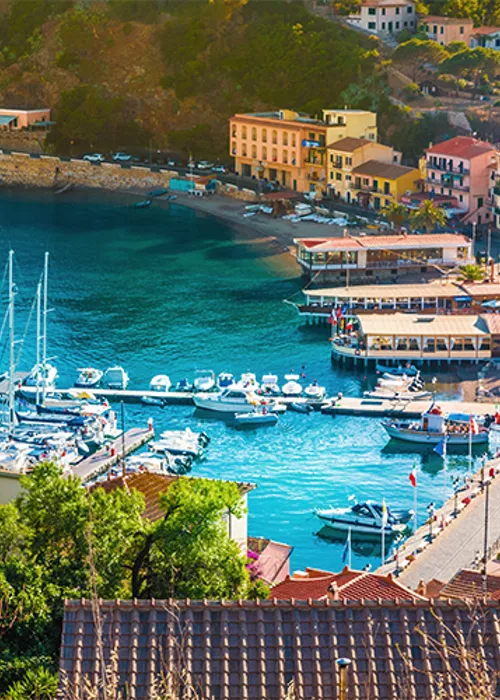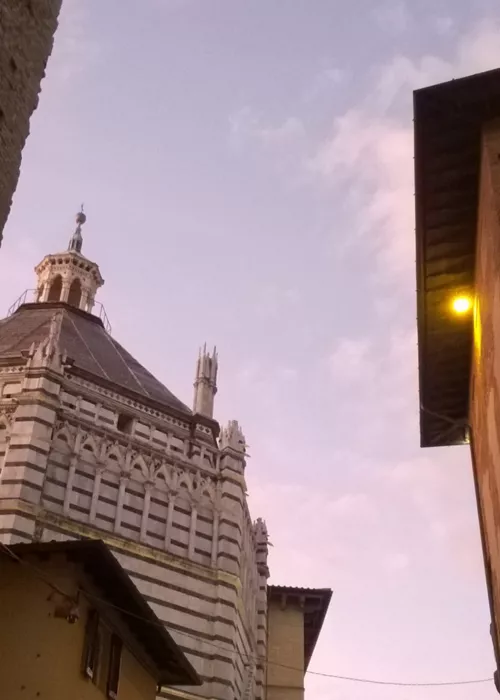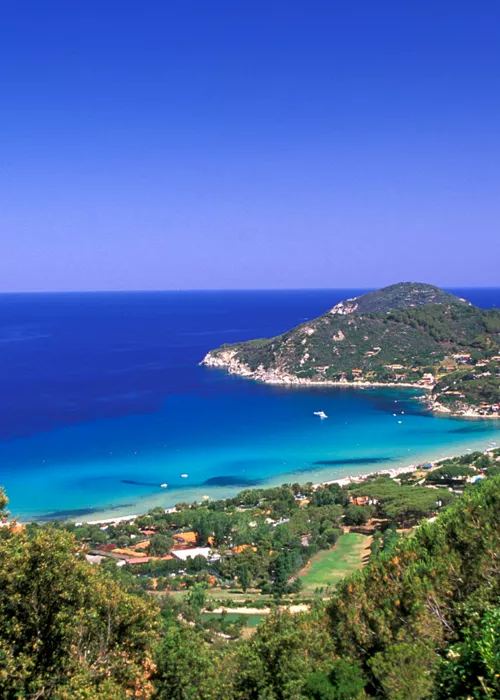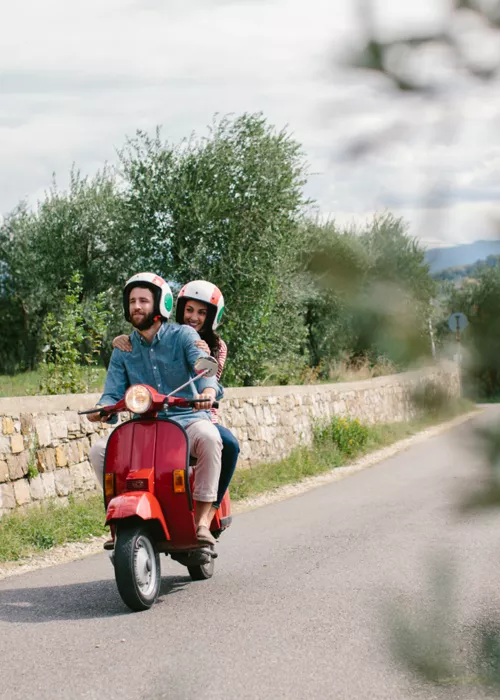Wine Trail of the Hills of Candia and Lunigiana: discovering the Vermentino Hills of Luni

A soft, bright yellow, with a citrus and herbal flavour: this is the Colli di Luni DOC white wine produced from Vermentino grapes along the Hills of Candia and Lunigiana wine trail, which runs up the Magra river valley from Massa to Pontremoli, some 60 km of pure wonder. This is the destination of the first day of our wine itinerary.
Here, the vineyards grow overlooking the Tyrrhenian Sea and the Ligurian Sea, with the Apuan Alps behind us and the Mediterranean scrub all around, which lends the wine its aromas. The best villages to visit are Vinca and Montignoso, where you can taste the famous bread, and Colonnata to sample the famous "lardo". An excellent honey is also produced in Lunigiana. After choosing one of the many typical trattorias, for dinner, order marinated cod, and as a dessert, the "torta d'erba" vegetable pie.
Chianti Classico Wine Trail: wine, villages and beauty

The second day of our journey to discover typical wines continues in the direction of one of the most classic images of Tuscany, the Chianti countryside. After a night in Lunigiana, get in the car, and after about 160 kilometres, you will have arrived. Here, between the provinces of Siena and Florence, passes the Chianti Classico Wine Trail. Cross the medieval village of Greve in Chianti, discover the Rocca di Castellina in Chianti, admire the view of the vineyards from Radda in Chianti and fall in love with the market square of Gaiole in Chianti.
After immersing yourself in these gentle hills covered with vineyards and olive groves, it's time to sip a glass of Chianti Classico, even better if accompanied by a dish of Florentine tripe. This DOCG red wine produced with Sangiovese grapes must age in a cask for 11 months, 24 if it is a riserva. Pay attention to the label with the black rooster, the symbol of the Chianti Military League, on all bottles produced within the Chianti territory. An undeniable hallmark.
Montepulciano: face to face with fine wine

The third day is entirely dedicated to the exploration of Montepulciano, only an hour and a half away from the Chianti countryside by car.
If you're wondering what to visit in this beautiful village, start from Piazza Grande with the 14th-century Palazzo Comunale. The view will seem familiar, as the star of one of the most evocative scenes of New Moon, the second chapter of the Twilight saga. The setting in the film is in Volterra, but filming took place in this very square in Montepulciano. Continue with the famous Tower of Pulcinella and the Cathedral of Santa Maria Assunta and conclude with the Medici Fortress. You'll be amazed!
After admiring the beauty of Montepulciano, it's time to enjoy the culinary delights. To produce Vino Nobile di Montepulciano, only grapes grown in this area of central Tuscany can be used. Before being bottled, it must mature in a wooden barrel for two years. It has a dark red colour, and its full-bodied flavour also allows you to taste the wood. At the table, it combines perfectly with a dish of pappardelle in hare or goose sauce, typical of the region.
Montalcino: the home of Brunello with a taste of sunny countryside

Among the most famous Tuscan wines, Brunello di Montalcino is produced between the valleys crossed by the rivers Asso, Orcia and Ombrone. It is a bright red with an intense flavour, which encompasses centuries of history and the scents of the sunny countryside where the vines are grown. Savour it while admiring the expanses of vineyards at the foot of the village; you'll have the best view from the walkways along the ancient walls.
Get lost in the narrow streets of the medieval village of Montalcino, your stage of the fourth day, just 36 kilometres from Montepulciano. Here, you can discover the Fortress of Montalcino, a fortress built in 1361 reusing in part previous thirteenth-century structures, and the last bulwark of the resistance of the Sienese Republic, but also the Duomo, a reference point of the historic centre with its neoclassical lines. Finally, end the day in beauty in front of a plate of pici with wild boar ragu, a meal served with fresh pasta, similar to spaghetti but larger, typical of the area.
San Gimignano: sipping Vernaccia

Although Tuscan red wines are certainly better known, it's also worth discovering some white wines, such as Vernaccia di San Gimignano, beloved since the Renaissance for its delicate aroma and harmonious flavour. It is precisely this white to which you will devote the fifth day of the itinerary.
Get lost in the alleys of San Gimignano, one of the most beautiful villages in Tuscany, and then sit down at the table to enjoy an excellent ribollita, one of the typical soups of the Tuscan tradition, or a saffron risotto, another typical product of this area. The village is only 80 kilometres from Montalcino.
Maremma: with a taste of Sassicaia

The last stop of this wine tour takes us to the beautiful Etruscan Coast, only 70 kilometres from San Gimignano.
The Maremma is crossed by 3 wine trails, including the Montecucco wine trail and the Colli di Maremma wine trail, where the famous Montecucco and Morellino di Scansano red wines are produced. But the best known red wine in this area is undoubtedly Bolgheri Sassicaia, a DOC wine produced with Cabernet Sauvignon vines in the area of Castagneto Carducci, in the province of Livorno. It is among the most important Italian wines, with an intense red colour and an unforgettable flavour, perfect to accompany a Tuscan stracotto (braised beef), an ancient Tuscan recipe prepared with beef and vegetables.
Discover it along the Etruscan Coast wine trail, immersed in one of the most typical landscapes of Tuscany, with rows of cypress trees towering above the bright green hills. Here is the famous Via dei Cipressi of Bolgheri, an unmissable stop on a trip to Maremma.
This concludes our journey in Tuscany, to discover a region of passion, taste and savoir faire.

